Yesterday, HubSpot hosted a one-time-only webinar on the Science of Inbound Marketing, hosted by Dan Zarrella, HubSpot's social media scientist, and VP of Marketing at Hootsuite Ben Watson. As you might have heard, we tried to break the world record for the largest webinar ever, but missed the mark. So for now, that record is still held by, well, HubSpot... but we gave ourselves a run for our money ;-)
Just because we didn't break the record, though, doesn't mean that the Science of Inbound Marketing wasn't an epic success. And as always, you guys had some excellent questions to ask of our presenters, not all of which we could get to on Thursday. And since we're not publishing the webinar or it's slides, we're more than pleased to answer a round of them here! Read on to get the answers to your top seven questions about the science of inbound marketing.
Answers to the Top 7 Questions From #InboundSci
1) Why do you consider email marketing to be inbound?
Inbound marketing is all about attracting people to your business by providing interesting, helpful, relevant content, instead of interrupting people who aren't interested in your business by shoving your message down their throat. As such, email marketing, when approached in an inbound fashion, is one part of the entire inbound marketing landscape: SEO, social media, blogging, etc.
What do I mean by "inbound" email marketing? It means you're only emailing people who have explicitly asked that you email them -- you've done something to attract them to you so much so that they have asked to receive more communications from you. With an opt-in email list, it's up to you as an email marketer to keep up that inbound approach by providing those contacts with the same kind of helpful, informative content that made them attracted to you in the first place. But if you start blasting an unsegmented email list with irrelevant content, whether they opted in or not, you're no longer doing email marketing that fits into the inbound marketing approach.
2) How do you make a somewhat boring product or industry more interesting on social media?
First, it's critical to remember that what you think is "boring" isn't boring to leads who are looking for that exact solution! For example, changing your oil is kind of a boring topic to most people outside the auto industry ... until they need to learn how to change their oil, that is.
That being said, it's all about finding a relatable angle for your audience. If your social media content addresses your network's pain points, it will be inherently interesting. If you haven't defined personas yet, this will be extremely helpful in identifying those pain points so your content can center around them.
Social media is also a more laid back medium than, say, email. I mean, it's right there in the name -- "social" media. So don't be afraid to be a little humorous! Use visual content instead of making people read! Heck, combine the two and do some memejacking! We've written an entire post on how to make "boring" content interesting if you're looking for more ideas, but if you can center your social content around your audience's pain points and lighten it up with a more colloquial tone, you'll have a much more engaged social network.
3) Any thoughts on what makes people more likely to engage on social media?
Good question. Engagement is one of those fluffy marketing words that's actually pretty important -- if people don't engage with your social content, you'll have a mighty hard time growing your reach and getting that juicy lead-gen content out to the masses. But that doesn't mean you should only post lead-gen content; that alone won't get you social engagement. A mix of content is best -- lead generation content, third-party content, news content, and particularly visual content for sites like Facebook, Google+, and Pinterest.
Dan also performed some research to determine not just what content types incite social shares, but what, on a higher level, motivates social media fans and followers to share. Take a look at what he found:
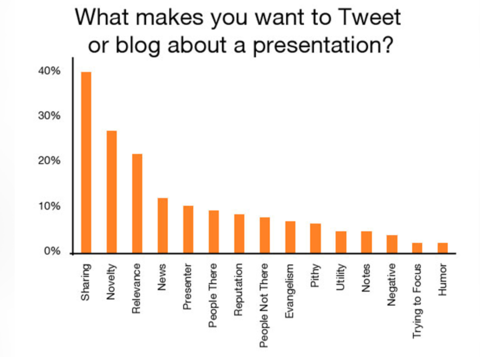
So ask yourself -- is the content you're posting to social media novel, or is it just the same ol' thing people are used to reading? Or perhaps you're breaking some critical news; that would certainly play into your network's desire to share relevant content. After all, everyone loves to be the first to break big news. Or perhaps you're not unleashing anything groundbreaking via your social networks today, but you do have some thought leadership content in your arsenal. If you can make your network sound smart to their networks, you're providing the type of content people will share.
4) What factors tend to influence an email's click-through rate?
As Dan and Ben both highlighted in the webinar, the time of day that an email lands in a recipient's inbox is a huge influence on your email's click-through rate. While the best times to send emails will inevitably vary by audience, Dan's data shows that sending an email out at 6 AM yielded the highest click-through rate.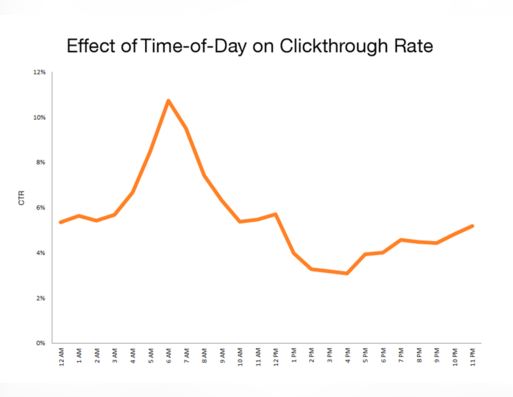 The lowest click-through rate, on the other hand, happened at 4 PM, just before the end of a 9-5 work day. People are likely paying less attention to their inboxes at this time, and are probably more focused on finishing the day's tasks before going home.
The lowest click-through rate, on the other hand, happened at 4 PM, just before the end of a 9-5 work day. People are likely paying less attention to their inboxes at this time, and are probably more focused on finishing the day's tasks before going home.
5) If I send emails more frequently, can I get blacklisted as a spammer?
You certainly can, but getting blacklisted as a spammer isn't typically dependent on just one behavior like increasing email frequency. The frequency with which you email should really be dependent on the size of your audience and your ability to appropriately segment them. You don't need to include every contact in your database in every single email send you schedule -- in fact, doing this will result in more unsubscribes and SPAM reports, because the content contained in the email message can't possibly be relevant to such a broad audience. It's that type of email marketing behavior that gets you blacklisted as a spammer. If you're interested in increasing the frequency of your email marketing sends, it's best to approach it scientifically; reference our blog post that tells you how to run an email sending frequency test.
6) How do audiences respond to command words in calls-to-action?
According to Dan's data, pretty negatively, especially if that word is "submit." In fact, using the word "submit" earned email senders a 14% conversion rate, while using a CTA without the word "submit" increased that conversion rate to 17%.

When it comes to conversion rates, every percentage point matters. Dan extended his research to look at the number of clicks buttons received based on other copy, too. While "Submit" wasn't the worst copy you could use, it's greatly surpassed in performance by "Click Here" and "Go."
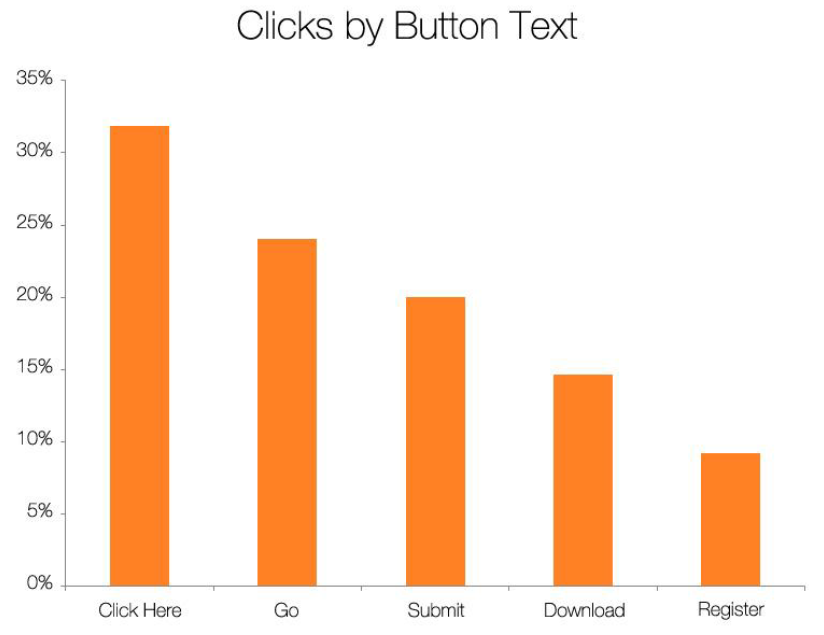
The moral of the story? People respond much better to certain command words in CTAs than others!
7) How can a company or brand increase blog readership?
Well, lots of things! But the key is to capitalize on each kind of traffic your blog receives -- organic, direct, paid, email, social, etc. For example, do you know that email is an excellent source of traffic for your blog already? Perhaps you should put effort towards increasing blog subscribers, then, so your blog alert emails can help drive more traffic. Start putting blog subscribe buttons on more visible parts of your website, promoting your blog subscription in email marketing sends, and sharing it via social media.
Or perhaps you've seen that a lot of your blog traffic comes from organic search, but you haven't really been putting much effort into SEO. That's a big lever you can pull to increase blog readership if you're already seeing some success with very little effort! Identify keywords you'd like to drive traffic for, and generate topics around them to start driving more organic traffic to your site.
Many companies also find success growing their blog readership by guest blogging more frequently. Not only does guest blogging -- writing blog content for other websites -- help you get access to a new audience that doesn't know you yet, but the inbound links will help you with that SEO, too ;-)
What other lingering questions do you have on the Science of Inbound Marketing?
Image credit: Stefan Baudy
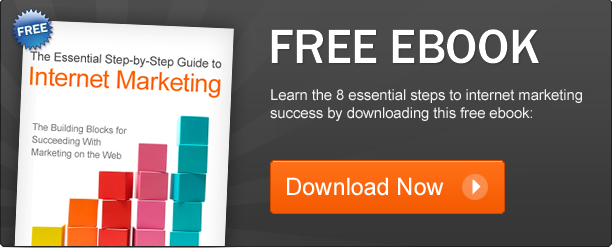




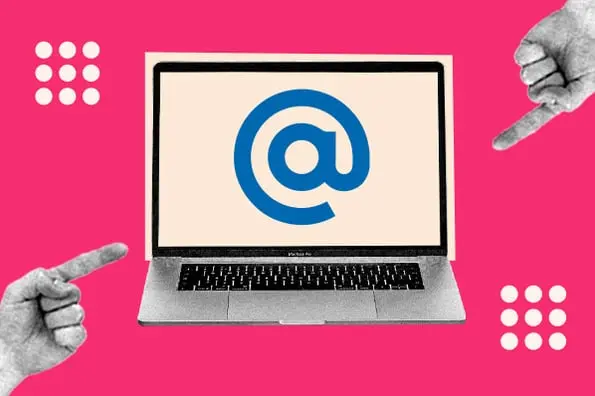

![How to Delete Your Instagram [Easy Guide]](https://blog.hubspot.com/hubfs/delete-instagram.png)
![Millennials vs. Gen Z: Why Marketers Need to Know the Difference [New Data]](https://blog.hubspot.com/hubfs/millenials%20vs%20gen%20z%20what%20marketers%20need%20to%20know%20when%20trying%20to%20reach%20each%20generation.jpg)

![How to Edit a PDF [Easy Guide]](https://blog.hubspot.com/hubfs/280_How-to-Edit-PDF.png)

![Marketing Without a Budget? Use These 10 Tactics [Expert Tips]](https://blog.hubspot.com/hubfs/marketing%20without%20budget.jpg)
